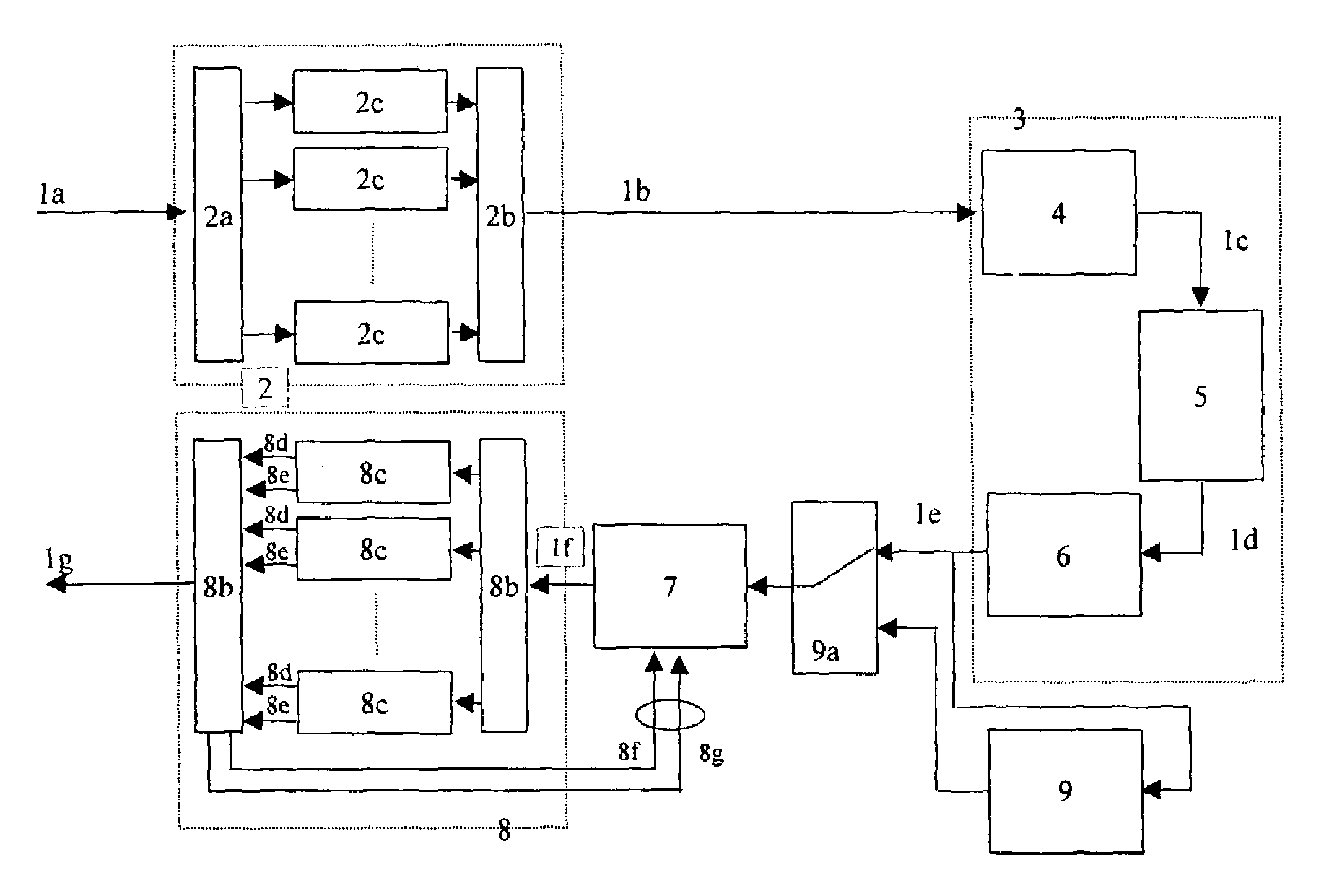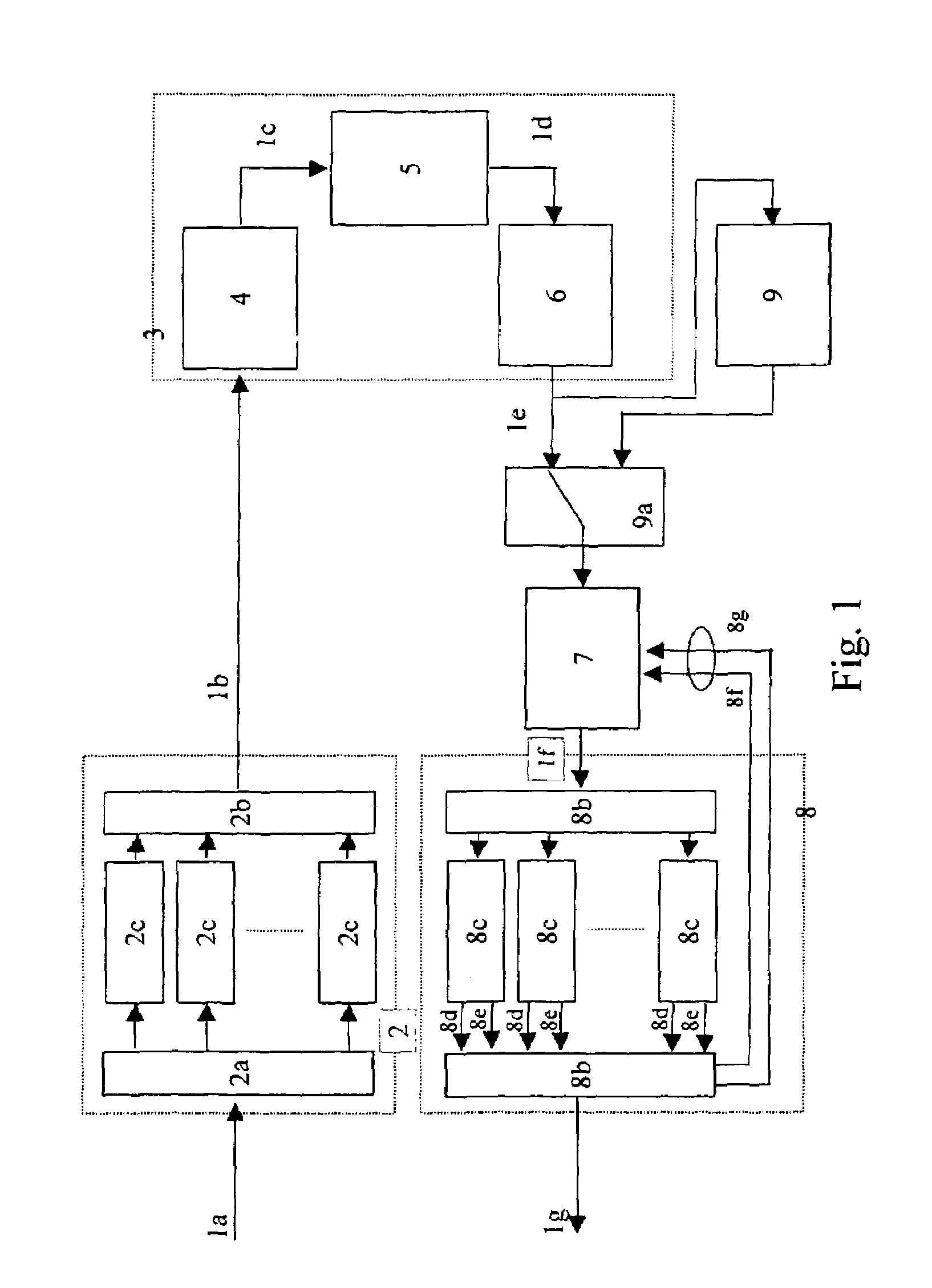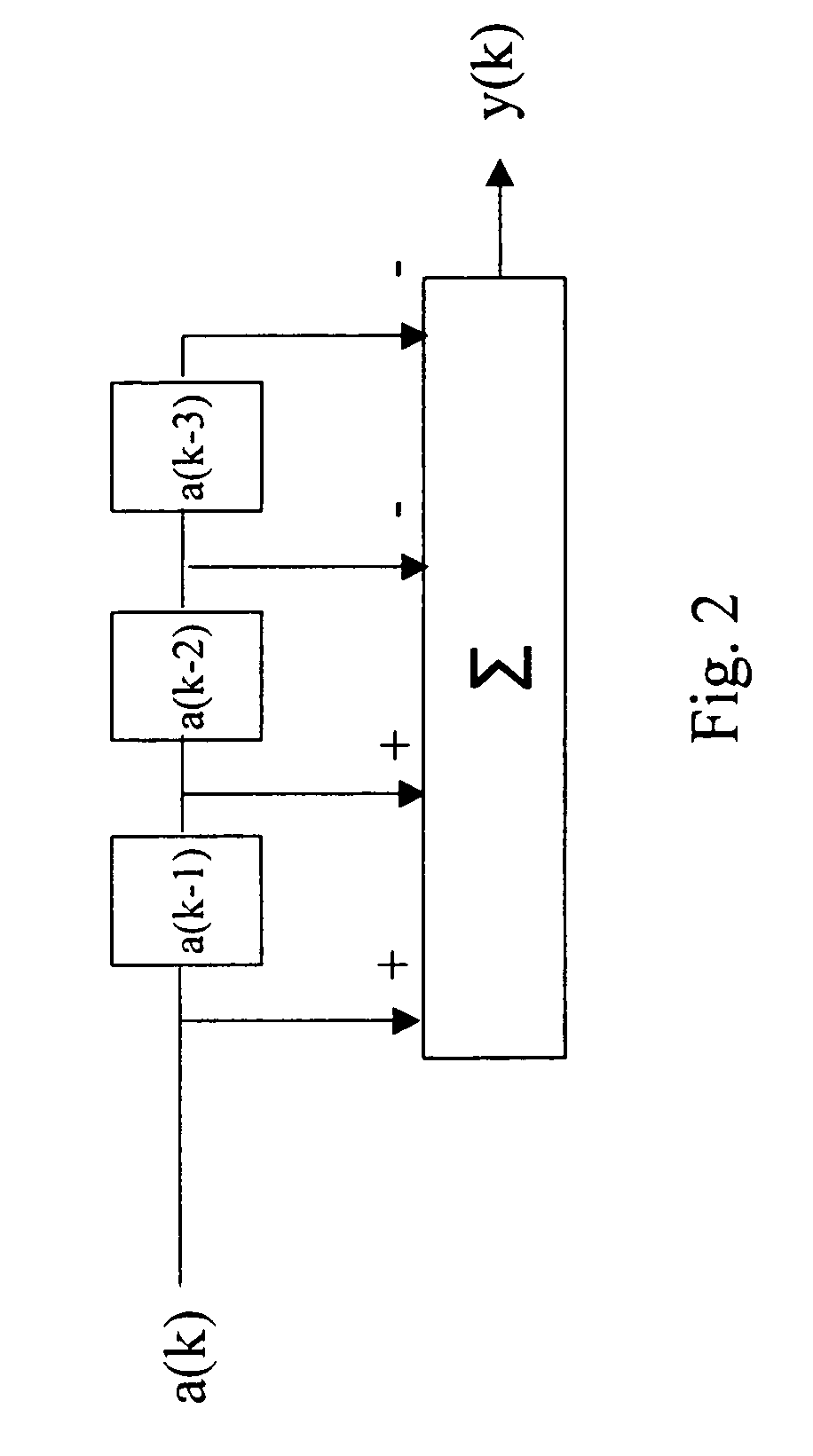Data recording/readback method and data recording/readback device for the same
- Summary
- Abstract
- Description
- Claims
- Application Information
AI Technical Summary
Benefits of technology
Problems solved by technology
Method used
Image
Examples
second embodiment
[0061]FIG. 5 shows the present invention. This embodiment differs from the embodiment shown in FIG. 1 in that a code scrambling circuit 30a for changing the code sequence of the record information code sequence 1b is interposed between the error data detection / correction encoder 2 and the recording / readback-system channel 3. Also, a reverse code scrambling circuit 30b corresponding to the code scrambling circuit 30a and changing the code sequence of an code sequence input in the opposite direction is interposed between the maximum-likelihood sequence decoder 7 and the error data detector / corrector circuit 8. The code a sequence changed by the code scrambling circuit 30a is restored to the original code sequence by the reverse code scrambling circuit 30b. The code position information 8f and the code information 8g takes the ordering of the code sequence at the input and output of the reverse code scrambling circuit 30b into account and performs appropriate conversions via a similar ...
third embodiment
[0063]FIG. 7 shows the present invention. In this embodiment, a second error data checker / corrector 32b is disposed for the readback code sequence 1g output from the maximum-likelihood sequence decoder 7 and a corresponding second error data detection / correction encoder 32a is disposed for the record information code sequence 1b. In this second error data detection / correction encoder 32a, decoding error propagation with relatively short code lengths are corrected through a relatively simple error correction code such as parity codes or Hamming codes. More specifically, in the embodiment shown in FIG. 5 decoding errors shorter than the code length of the code blocks 20 or the recording code blocks 23 are corrected by the second error data detector / corrector 32b. This allows the present invention to eliminate decode errors generated within individual code sequences 21a–21d which cannot be improved by repeatedly performing maximum-likelihood sequence decoding, thus improving correction...
PUM
 Login to View More
Login to View More Abstract
Description
Claims
Application Information
 Login to View More
Login to View More - R&D
- Intellectual Property
- Life Sciences
- Materials
- Tech Scout
- Unparalleled Data Quality
- Higher Quality Content
- 60% Fewer Hallucinations
Browse by: Latest US Patents, China's latest patents, Technical Efficacy Thesaurus, Application Domain, Technology Topic, Popular Technical Reports.
© 2025 PatSnap. All rights reserved.Legal|Privacy policy|Modern Slavery Act Transparency Statement|Sitemap|About US| Contact US: help@patsnap.com



